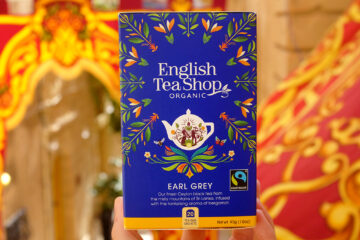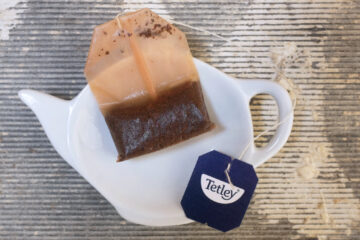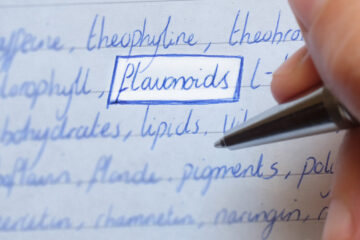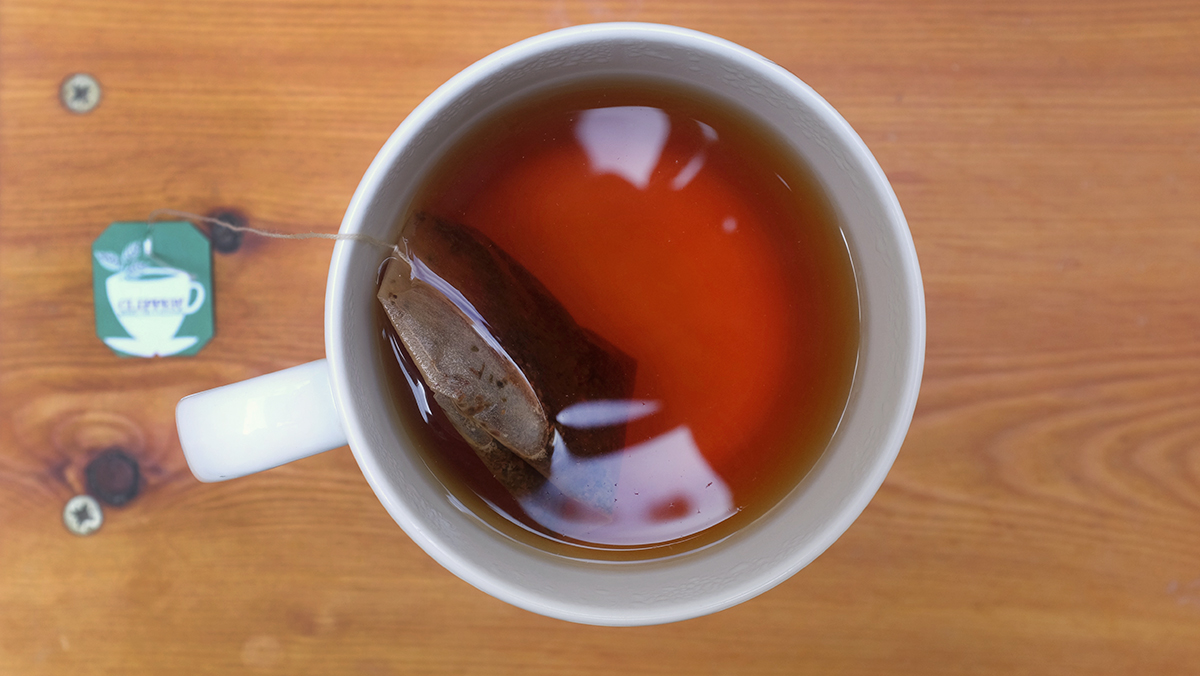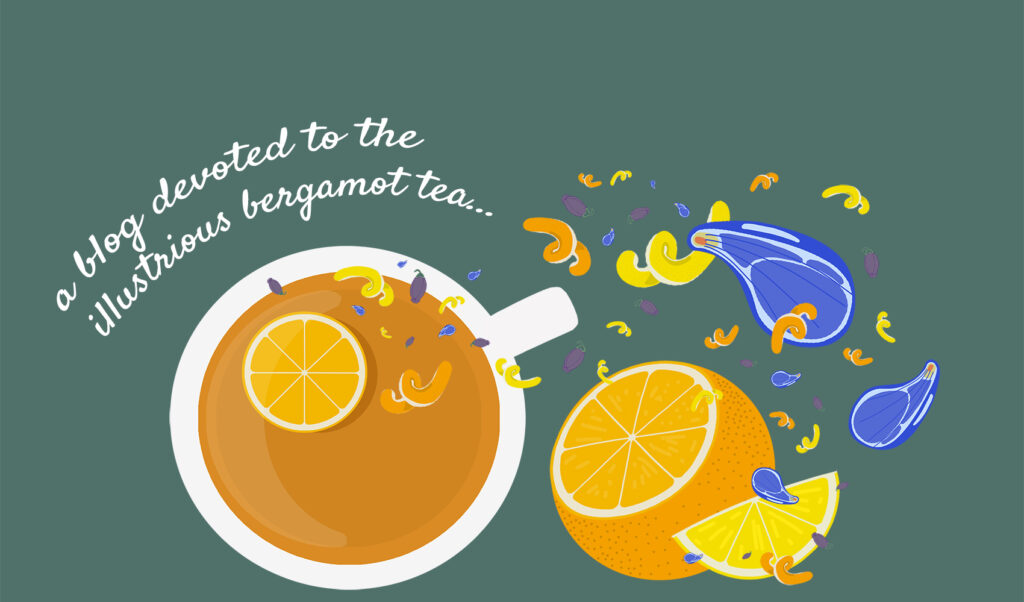Listen-up tea drinkers! Earl Grey isn’t just a tasty hot beverage to drink alongside a slice of cake.
Made from black tea and bergamot oil, it has a long list of health benefits too.
But first, let’s take a look at precisely what’s in that cup of Earl Grey.
Table of Contents
- 1. Aids Weight Loss
- 2. Improves Heart Health
- 3. Reduces “Bad” LDL Cholesterol
- 4. Lowers Blood Pressure
- 5. Lowers Blood Sugar Levels
- 6. Better Skin Health
- 7. Promotes Good Gut Health & Digestion
- 8. A Natural Mood Enhancer (Antidepressant)
- 9. Improves Oral Hygiene
- 10. Fights Food Poisoning
- 11. Reduces Risk of Stroke
- 12. Improves Focus and Energy
- 13. A Great Sleep Aid
- 14. Stimulates the Immune System
- 15. Reduces Pain
- 16. Reduces Stress
What’s in Earl Grey Tea?
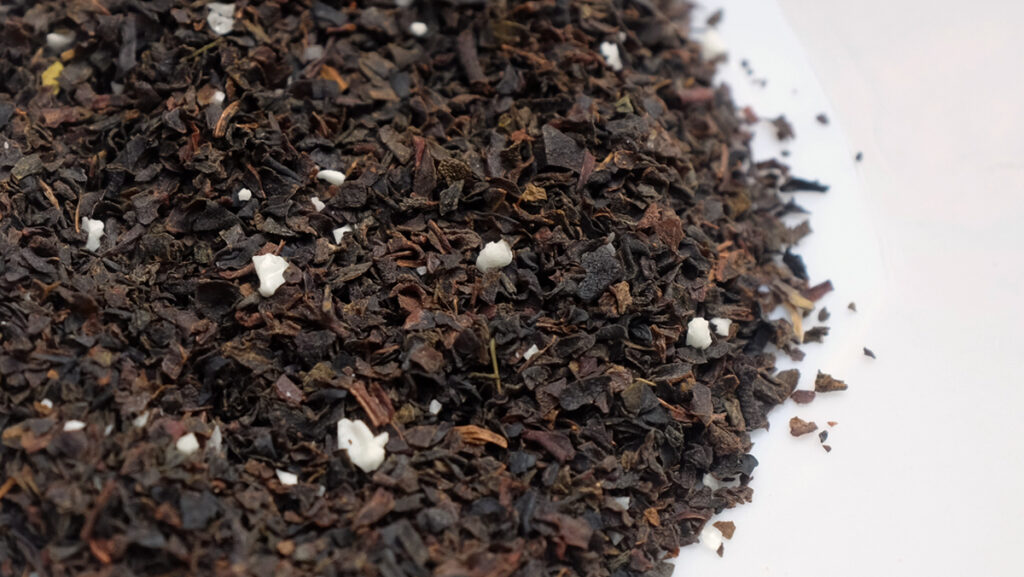
Ingredients
The two main building blocks of any Earl Grey blend include:
- Black Tea
- Bergamot
But there are various types of Earl Grey tea. And sometimes, other ingredients are added.
This can range from citrus peel and dried petals to vanilla and neroli oil.
Caffeine
On average, an eight-ounce cup of Earl Grey tea contains 40-120mg of caffeine.
That’s significantly less than matcha (280mg) and coffee (avg. 95mg/ 8oz).
As a result, it affects the brain in an entirely different way.
Calories
A cup of Earl Grey typically contains zero grams of protein, fat, carbs, fibre, and sugar.
The amount of calories in Earl Grey (without milk or sugar) is also low.
On average, it can range anywhere from 0 to 4 calories.
But this depends on what extra ingredients (if any) are in the blend.
The amount of bergamot flavouring will also have a bearing on the above values. As will whether it’s natural or artificial bergamot in your cup.
Micronutrients
Earl Grey contains trace amounts of minerals and vitamins.
These include:
- Iron
- Potassium
- Magnesium
- Fluoride
- Aluminium
- Chlorophyll
- Folic acid
- Alkaloids (e.g. caffeine, theophylline, and theobromine)
Black tea also contains Vitamins A, B1, B2 (Riboflavin) and B6.
While both black tea and bergamot are rich in immune-boosting Vitamin C!
All this comes together to create a cup of bergamot tea that is both flavoursome and nutritious!
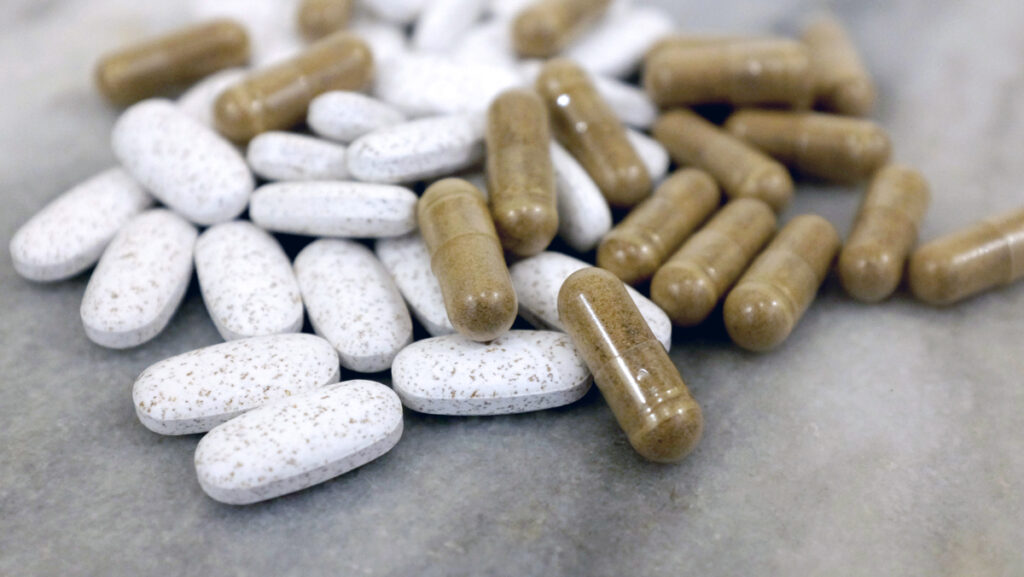
Amino Acids
L-theanine
This incredible amino acid is found, almost exclusively, in green and black tea.
And due to its pep-inducing properties, L-theanine (paired with caffeine) is frequently added to pre-workout supplements.
In addition to improved focus, research shows that it can help with stress, anxiety, and insomnia.
It’s also known to boost immunity and help maintain blood pressure.
Antioxidant Properties
Polyphenols
Earl Grey is packed full of antioxidants. And this includes polyphenols.
Black tea polyphenols contain elements of catechins, theaflavins, and thearubigins.
Bergamot is also full of polyphenols. However, they differ from tea polyphenols, usually consisting of neoeriocitrin, neohesperidin, and naringin.
These polyphenols can decrease the risk of chronic disease. They do this by removing free radicals from the body and decreasing cell damage.
We will talk more about the specific benefits of these antioxidant properties below.
Flavonoids
Out of over 8000 types of polyphenols, flavonoids make up a whopping 60%.
And they’re separated into six sub-categories.
- Flavanols
- Flavan-3-ols
- Flavanones
- Flavones
- Isoflavones
- Anthocyanins
Both the bergamot and black tea in Earl Grey contain more than one of these.
Before we delve into all the juicy details, be aware! We’re specifically talking about black tea and genuine bergamot oil. If you are drinking tea with “bergamot flavour”, it won’t boast anywhere near as many benefits as the real stuff. Also note, the following is NOT medical advice. If you’re suffering from any health conditions, consult a health care professional.
Earl Grey Tea Health Benefits
1. Aids Weight Loss
Worried about piling on the pounds?
One of the biggest benefits of Earl Grey is that it may help with weight loss!
Tea polyphenols (found in Earl Grey) can inhibit fat digestion, promote fat metabolism, and reduce oxidative stress.
Bergamot, on the other hand, contains phytosome. When taken orally, phytosome decreases visceral fat levels (AKA belly fat).
This 12-week randomised study examined the anti-obesity effects of bergamot phytosome supplementation on obese individuals.
Out of the 64 participants, 33 were given 500 mg of bergamot phytosome twice, daily. The other group (31 people) were given a placebo.
By the end of the study, those taking bergamot phytosome experienced a significant reduction in LDL‐cholesterol and visceral adipose tissue.
What’s more, individuals saw results after just 30-days!
Additionally, bergamot is known to reduce the risk of metabolic syndrome. For example, abdominal obesity, high triglycerides, and high blood pressure.
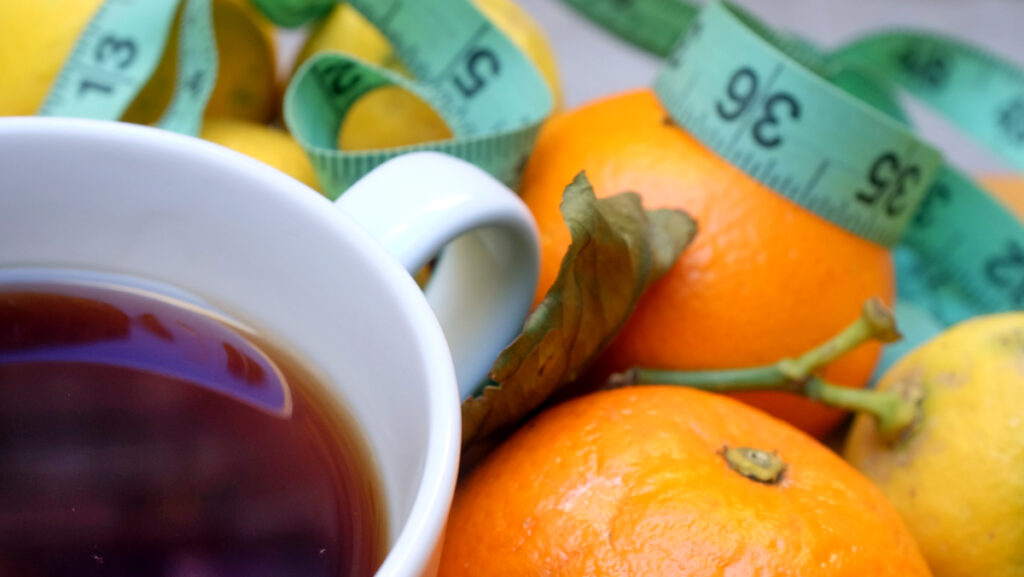
2. Improves Heart Health
The black tea in Earl Grey contains a group of antioxidants called flavonoids.
Flavonoids can be found in vegetables, fruit, red wine, dark chocolate, and of course, black tea.
Consuming flavonoids can reduce the risk factors for heart disease. This includes lowering blood pressure, cholesterol, and triglyceride levels.
This 12-week study showed that triglyceride values decreased by 38% in participants who consumed black tea every day.
In addition, their blood sugar levels were reduced by 18%. And, their LDL cholesterol plasma ratio went down by 17%.
3. Reduces “Bad” LDL Cholesterol
There are two types of lipoproteins.
- High-Density Lipoprotein (HDL)
- Low-Density Lipoprotein (LDL)
Each helps to transport cholesterol throughout the body.
LDL is also known as “bad” because it transports cholesterol to cells throughout the body.
HDL, on the other hand, transports cholesterol away from the cells.
Thankfully, there are plenty of LDL-busting elements in a nice cup of Earl Grey.
For example, this 3-week study showed that drinking five servings of black tea per day reduced LDL cholesterol by up to 11%.
From this, researchers concluded that black tea improved cholesterol levels in individuals. And particularly those at risk from heart disease or obesity.
Not to be outdone, bergamot oil contains flavanones. These are known to inhibit the cholesterol-producing enzymes within the body. Making it a natural statin of sorts.
This 6-month study of 80 people, all with high cholesterol levels, revealed that those who took bergamot extract every day greatly decreased their LDL cholesterol.
4. Lowers Blood Pressure
This randomised trial demonstrated that those who drank black tea had a decrease in systolic and diastolic blood pressure, compared to those in the placebo group.
While another study tested whether inhaling an essential oil, like bergamot, could help to reduce hypertension. And the answer was a resounding yes!
All this goes to show, that drinking Earl Grey tea daily may benefit those with high blood pressure.
5. Lowers Blood Sugar Levels
Epigallocatechin gallate (EGCG), a plant-based compound (catechin) commonly found in black tea, has been found to improve insulin levels.
One study on rats compared the effects of black tea extract on blood sugar levels.
The results revealed that black tea not only lowered blood sugar. But, it also improved how the body metabolised sugar.
And when blended with bergamot (also known to reduce blood sugar levels) you’re onto a real winner.
6. Better Skin Health
A cup of Earl Grey is largely made up of one ingredient – water!
This makes it an excellent way to stay hydrated. In turn, this allows you to take better care of your skin.
Additionally, Earl Grey is rich in antioxidants. This helps to accelerate the regeneration of new skin cells.
The result is healthy, clear, and blemish-free skin that simply glows.
But that’s not all! Earl Grey is also an anti-inflammatory.
So, how exactly does that help your skin?
Well, first off, it can reduce inflammation from the oxidative stress on your skin.
This slows down ageing. And, it may even help to fight skin cancer. Although, the evidence on that last one is somewhat limited.
Not just for drinking, you can use Earl Grey as an antibacterial salve. Just apply it directly onto your skin to treat conditions such as psoriasis, eczema, and acne.
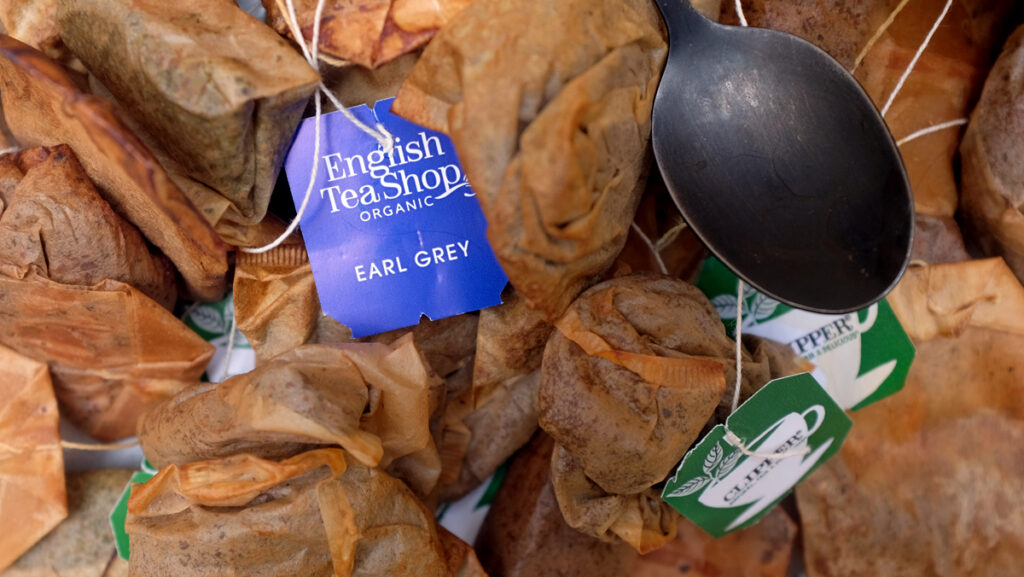
7. Promotes Good Gut Health & Digestion
The polyphenols found in black tea, work by promoting the growth of good bacteria and limiting the growth of bad bacteria.
While the antimicrobial properties of black tea can help repair the lining of the digestive tract and kill off harmful substances.
Black tea is also known to relieve painful indigestion, colic, and nausea.
And due to its digestive properties, you’ll be more regular – if you know what I mean!
The bergamot in Earl Grey may also assist with inflammatory digestive issues.
One study, with mice, showed that bergamot juice was beneficial in inhibiting the inflammatory proteins of colitis (inflammation of the colon).
Evidence also suggests that bergamot juice fights Helicobacter pylori bacteria. An infection that’s commonly associated with stomach ulcers and pain.
Honestly, is there anything Earl Grey cannot do?!
8. A Natural Mood Enhancer (Antidepressant)
In 2008, a study was undertaken in a hospice.
Researchers found that patients massaged with bergamot oil experienced less pain and depression over time.
A second study from 2011 measured the effects of bergamot oil on stressed teachers.
This study discovered that the teachers became less stressed and anxious when exposed to the aromas of bergamot oil. The same scent found in Earl Grey tea!
9. Improves Oral Hygiene
The black tea in Earl Grey contains high levels of catechin.
This antioxidant is crucial in preventing plaque, oral infections, and the formation of cavities. It can also help eliminate bacteria in the mouth.
Fluoride is another natural component of Earl Grey. And it’s considered one of the most important compounds for promoting oral health. It also fights against cavities and decay.
Bear in mind that Earl Grey can only do so much.
So don’t get rid of your toothbrush just yet!
10. Fights Food Poisoning
A 2006 study on chicken skin and cabbage leaves demonstrated how bergamot destroyed the bacteria behind several food-borne illnesses.
Within this study, they tested:
- Staphylococcus aureus
- Listeria monocytogenes
- Bacillus cereus
- E. coli O157
- Campylobacter jejuni
The bergamot-treated items came back completely bacteria-free. This suggests that Earl Grey can be used to fight food poisoning.
11. Reduces Risk of Stroke
It’s said that 80% of strokes are preventable. And evidence suggests that drinking black tea, like Earl Grey, can help reduce that risk.
One study followed 74,961 people for ten years. Researchers found that those who consumed four or more cups of black tea per day had a 32% lower risk of stroke than those who did not.
Another study discovered that those who drank more than three cups of black tea per day had a 21% lowered risk of stroke than those who consumed less than one cup of tea per day.
Plus, taking the time to relax with a nice brew, in general, is likely to reduce your risk of stroke.
12. Improves Focus and Energy
Both the caffeine and L-theanine (an amino acid) in black tea may help to improve focus and energy.
That’s because L-theanine, when mixed with caffeine, provides a stable energy boost.
This boost is different to coffee, which doesn’t contain L-theanine. As such, coffee creates “shaky” caffeine highs – aka, the jitters!
And according to this study, black tea significantly increased accuracy and alertness amongst participants compared to those taking a placebo.
13. A Great Sleep Aid
Due to its calming and sedative qualities, bergamot is often used as a sleep aid.
Not only does it slow your heart rate. But, it can help lower blood pressure. All of which prepares the body for sleep.
And while the black tea in Earl Grey contains caffeine, there are many caffeine-free alternatives.
For example, Redbush Earl Grey. Made with Rooibos, this sweet, herbal base is becoming increasingly popular.
Naturally caffeine-free, it comes with many additional health benefits. And the sweet taste pairs excellently with the bergamot flavour.
14. Stimulates the Immune System
Yet another benefit of Earl Grey (I know, the list is endless!) is how it boosts the immune system.
This is largely due to the bergamot found in Earl Grey.
As a citrus fruit, bergamot shares a lot of health benefits with oranges and lemons. As a result, bergamot is a rich source of vitamin C.
Vitamin C helps protect host tissue from damage, along with oxidant generation and microbial killing.
Black tea has also been found to increase vitamin C absorption.
In a nutshell, Earl Grey makes your immune system do good!
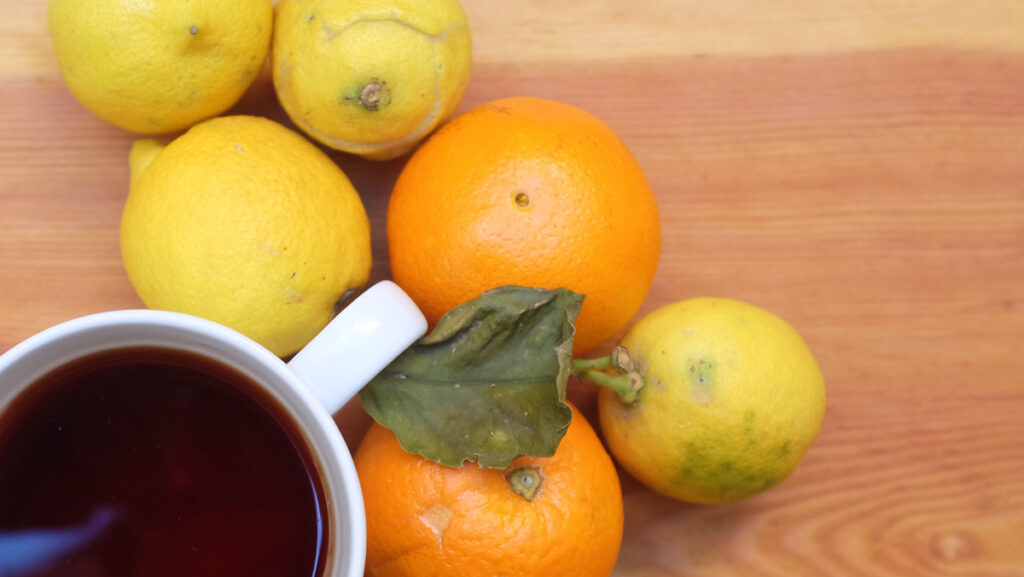
15. Reduces Pain
Black tea, a key ingredient of Earl Grey, is a known anti-inflammatory. And when consumed, evidence suggests it can help with muscle soreness and arthritic joint pain.
In addition, bergamot oil contains both linalool and carvacrol.
When applied to the skin, these two compounds have analgesic, anticonvulsant and anti-inflammatory properties.
As a result, bergamot has great potential as a means of pain relief.
16. Reduces Stress
We all know that a nice cup of tea can be a stress-reliever in itself.
But did you know that Earl Grey, specifically, reduces stress?
Not only does the black tea in Earl Grey improve mental focus and calm nerves. But, the combination of bergamot oil and water vapour reduces feelings of anxiety and fatigue when inhaled.
And according to this 2013 study, bergamot aromatherapy can relieve both anxiety and other mood disorders. It does this by signalling the brain to release dopamine and serotonin.
What more could you want?
Does Adding Milk to Earl Grey Tea Make a Difference?
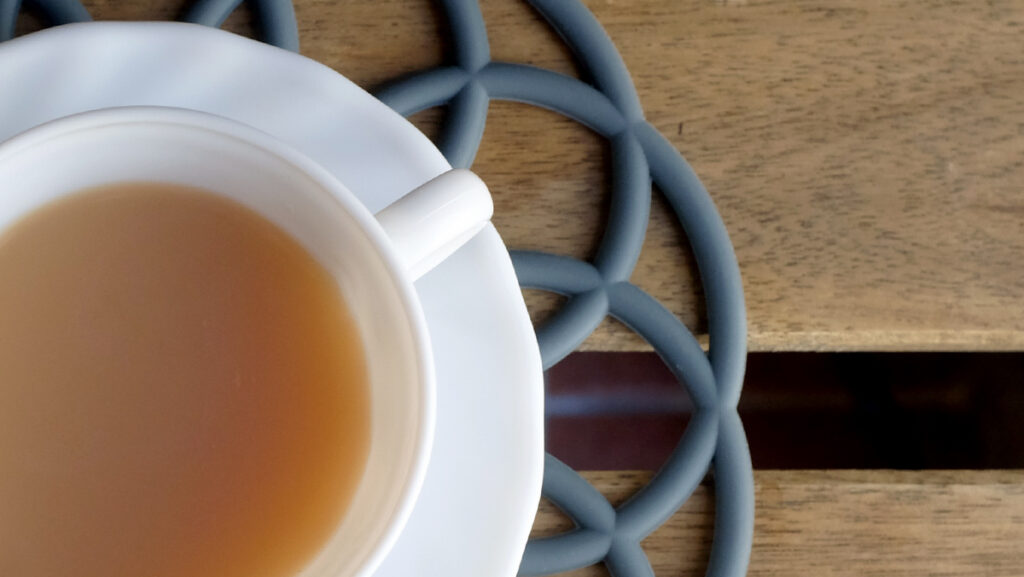
Ah, the age-old question of to milk or not to milk!
While many Earl Grey purists take their tea without milk, it can be just as tasty with milk.
And although a small drop of cow’s milk won’t reduce the health benefits of Earl Grey, you may consider trying nut or plant milk.
Not only is it yummy. But it can make your much-loved beverage even healthier!
Other Ways to Benefit from Earl Grey
Of course, the best way to enjoy Earl Grey is to drink it. But there are several alternative ways to reap the health benefits of Earl Grey tea.
Alternative Uses for Earl Grey Tea
Bathing in Earl Grey
Adding a couple of teaspoons of Earl Grey tea leaves (or tea bags) to hot bath water is a great way to surround yourself with its beautiful (and beneficial) aromas. It may also help soothe sunburn.
Rinsing Hair in Earl Grey
Earl Grey is a nifty way to add some shine to your locks! Simply steep the tea overnight in boiling water. Then, use it as a final rinse for your hair the next day.
Eating Earl Grey
Adding Earl Grey to recipes ensures that you’re getting the most out of its health benefits. Examples of Earl Grey recipes include ice cream, creme brulee, smoked meats, cake, and bread.
Scrubbing with Earl Grey
Mix Earl Grey with some coconut oil and cane sugar to create an exfoliant that’s filled to the brim with antioxidants. You’ll smell amazing too!
So, Is Earl Grey Good for You?
The answer is a million times yes!
Not only is Earl Grey tea an excellent option for those after a zero-calorie drink. But it’s packed full of antioxidants. And it has less caffeine than coffee.
Drinking this fragrant tea is also incredibly enjoyable. Arguably the best health benefit of Earl Grey!
Frankly, even if there weren’t any health benefits, I’d still love it! What about you?


